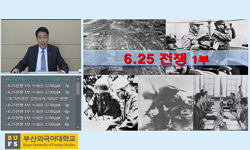Gelatin dry plate photographs dating to the Japanese colonial era and the official documents from the Japanese Government-General of Korea Museum in the collection of the National Museum of Korea are significant materials documenting cultural heritage...
http://chineseinput.net/에서 pinyin(병음)방식으로 중국어를 변환할 수 있습니다.
변환된 중국어를 복사하여 사용하시면 됩니다.
- 中文 을 입력하시려면 zhongwen을 입력하시고 space를누르시면됩니다.
- 北京 을 입력하시려면 beijing을 입력하시고 space를 누르시면 됩니다.
국립중앙박물관 소장 유리건판과 기록자료로 본 황해도 성불사(成佛寺)의 불교조각 = Buddhist Sculptures from Seongbulsa Temple in Hwanghae-do Province as Seen through Gelatin Dry Plates and Archival Materials from the Collection of the National Museum of Korea
한글로보기https://www.riss.kr/link?id=A109116864
- 저자
- 발행기관
- 학술지명
- 권호사항
-
발행연도
2024
-
작성언어
-
-
주제어
국립중앙박물관 ; 國立中央博物館 ; 유리건판 ; 琉璃乾板 ; 조선총독부박물관 문서 ; 朝鮮總督府博物館 文書 ; 북한 불교미술 ; 北韓 佛敎美術 ; 성불사 ; 成佛寺 ; 불교조각 ; 佛敎彫刻 ; 도선 ; 道詵 ; 나옹 ; 懶翁 ; 유희좌 ; 遊戲坐 ; National Museum of Korea ; Gelatin dry plate ; Documents from the Japanese Government-General of Korea Museum ; Buddhist art of North Korea ; Seongbulsa (Sǒngbulsa) Temple ; Buddhist sculpture ; Doseon ; Tosǒn ; Naong ; Pose of lowering one leg from crossed legs
-
자료형태
학술저널
-
수록면
278-303(26쪽)
- 제공처
-
0
상세조회 -
0
다운로드
부가정보
다국어 초록 (Multilingual Abstract)
Gelatin dry plate photographs dating to the Japanese colonial era and the official documents from the Japanese Government-General of Korea Museum in the collection of the National Museum of Korea are significant materials documenting cultural heritage in North Korea before it was severely damaged in 1950 during the Korean War. There has been an increase in recent years in studies of Buddhist sculptures in North Korea based on these photographs and documents.
This paper presents some new comments on the Buddhist sculptures at Seongbulsa Temple in Hwangju, one of the most famous temples in Hwanghae-do Province, based on the related existing research outcomes. This paper aims to facilitate a more comprehensive understanding of the Buddhist sculptures at Seongbulsa Temple by chronicling its history based on historical records, examining its current status, and exploring in detail the production dates and backgrounds of the Buddhist sculptures featured on gelatin dry plates. Prior to Korea’s liberation from Japan in 1945, Seongbulsa housed at least seven sculptural items: two Bodhisattva statues, four Buddha statues, and a triad. Two items are from the early Goryeo period, one is from the late Goryeo period, three are from the early Joseon period, and one is from the late Joseon period.
Among them, two surviving items are noteworthy. One is the early Goryeo-era Stone Seated Bhaishajyaguru Buddha photographed in Eungjinjeon Hall at Seongbulsa Temple. A close examination of a schematic drawing of the sculpture’s pedestal made at the time it was photographed reveals that its material accords with the materials used for the headless Stone Seated Bhaishajyaguru Buddha and pedestal currently found in the old Sangwonam Hermitage site in the Inner Geumgang Valley of Jeongbangsan Mountain. This accordance could mean that the statue is a new significant example of early Goryeo Buddhist sculpture in North Korea. The other notable sculpture is the Gilt-bronze Seated Amitabha Buddha Triad created in 1454 (the second year of the reign of King Danjong) and discovered in Geungnakjeon Hall at Seongbulsa. This statue is currently in the collection of the Sariwon History Museum in Hwanghae-do Province. It is an important example of a dated small gilt-bronze Buddhist statue from the early Joseon period found in North Korea.
This paper is a case study of Buddhist sculptures in North Korea, focusing on Seongbulsa Temple. Further utilization of the National Museum of Korea’s gelatin dry plates will contribute to developing the study of the history of Korean Buddhist sculpture.
동일학술지(권/호) 다른 논문
-
- 국립중앙박물관
- 정인성 ( Jung In-seung )
- 2024
-
장무이묘 출토 명문전(銘文塼)의 고고학적 검토 ―국립중앙박물관 소장품을 중심으로
- 국립중앙박물관
- 이나경 ( Lee Nakyung )
- 2024
-
- 국립중앙박물관
- 안정준 ( An Jeongjun )
- 2024
-
서북한 지역 전축분(塼築墳) 연대의 하한 재검토 ―기년명전(紀年銘塼)을 중심으로
- 국립중앙박물관
- 장병진 ( Jang Byungjin )
- 2024




 DBpia
DBpia




